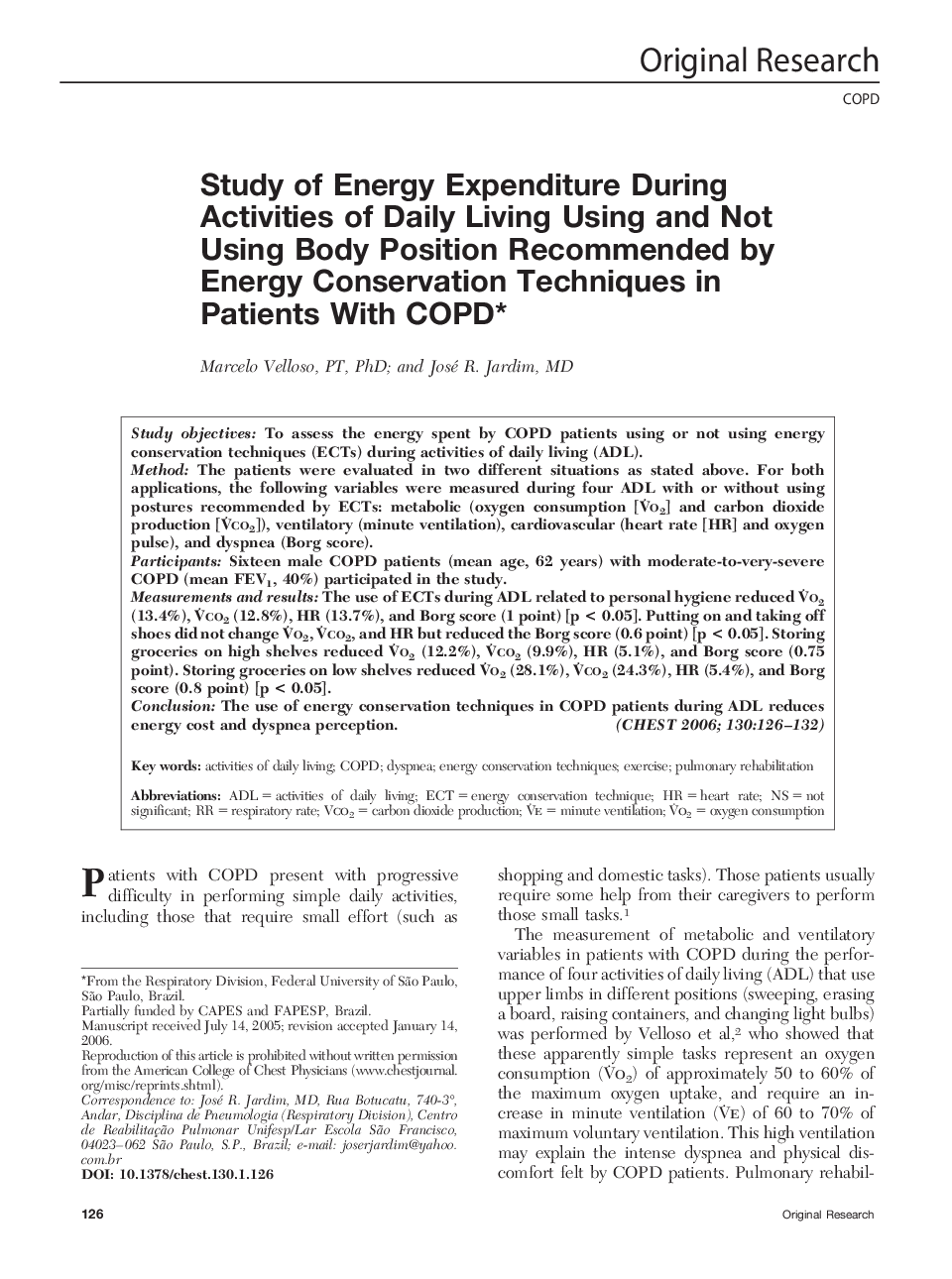| کد مقاله | کد نشریه | سال انتشار | مقاله انگلیسی | نسخه تمام متن |
|---|---|---|---|---|
| 2905179 | 1173423 | 2006 | 7 صفحه PDF | دانلود رایگان |

Study objectivesTo assess the energy spent by COPD patients using or not using energy conservation techniques (ECTs) during activities of daily living (ADL).MethodThe patients were evaluated in two different situations as stated above. For both applications, the following variables were measured during four ADL with or without using postures recommended by ECTs: metabolic (oxygen consumption [Vo2] and carbon dioxide production [Vco2]), ventilatory (minute ventilation), cardiovascular (heart rate [HR] and oxygen pulse), and dyspnea (Borg score).ParticipantsSixteen male COPD patients (mean age, 62 years) with moderate-to-very-severe COPD (mean FEV1, 40%) participated in the study.Measurements and resultsThe use of ECTs during ADL related to personal hygiene reduced Vo2 (13.4%), Vco2 (12.8%), HR (13.7%), and Borg score (1 point) [p < 0.05]. Putting on and taking off shoes did not change Vo2, Vco2, and HR but reduced the Borg score (0.6 point) [p < 0.05]. Storing groceries on high shelves reduced Vo2 (12.2%), Vco2 (9.9%), HR (5.1%), and Borg score (0.75 point). Storing groceries on low shelves reduced Vo2 (28.1%), Vco2 (24.3%), HR (5.4%), and Borg score (0.8 point) [p < 0.05].ConclusionThe use of energy conservation techniques in COPD patients during ADL reduces energy cost and dyspnea perception.
Journal: Chest - Volume 130, Issue 1, July 2006, Pages 126–132